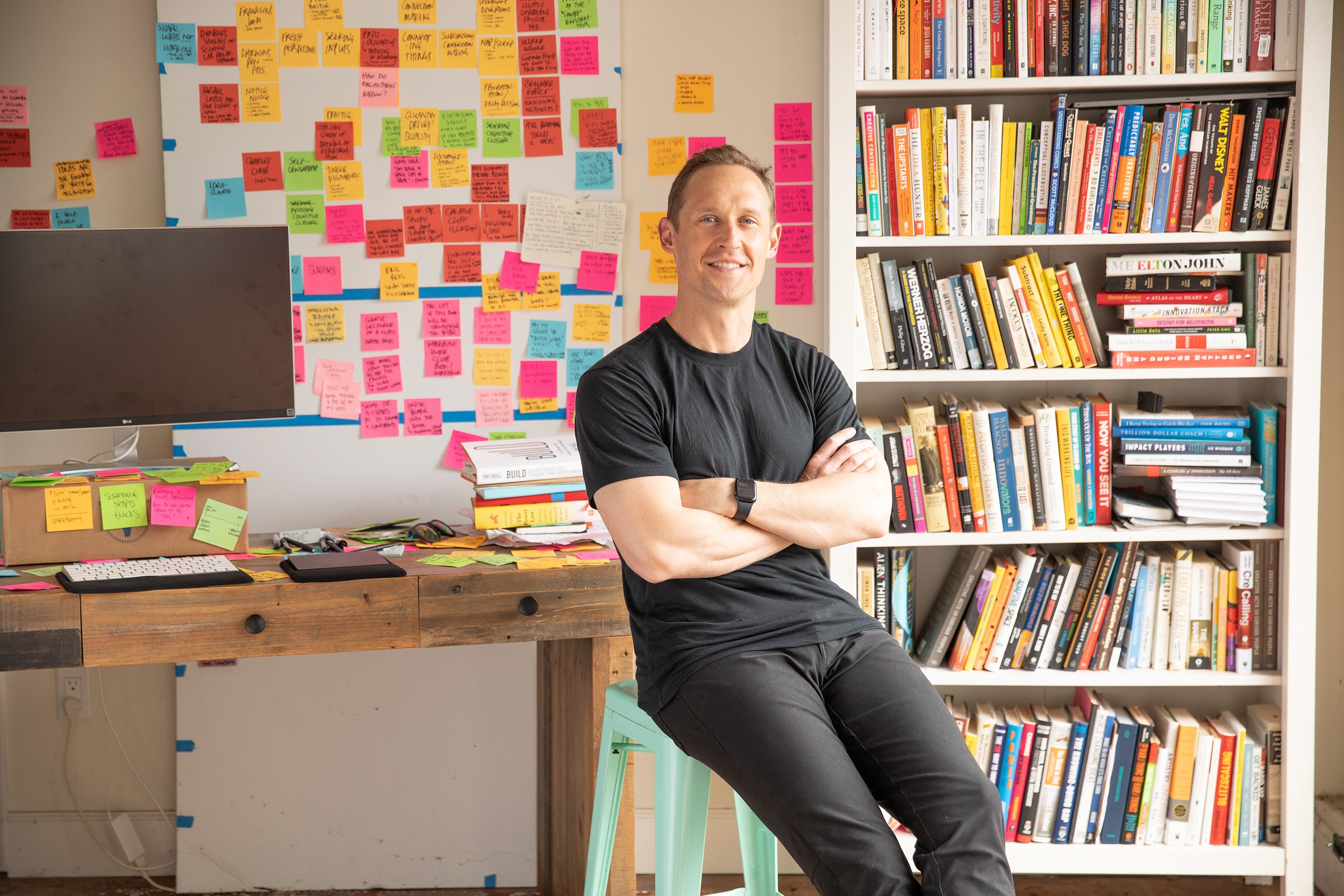
Methods of the Masters
A blog on the art & science of creative action.
How to Have an Innovative Idea: Three Simple Steps
Quick: come up with an innovative idea!
If you’re anything like the thousands of students I’ve coached in the last fifteen years, panic alarms just went off.
But the truth is, the creative process is hardly a mystery – in fact, it can be broken down into three simple steps.
Build Your Idea Muscle
Spectacular entrepreneurs craft clever experiments. And a robust experimentation practice demands a rigorous ideation ritual. At Stanford, this is how folks build the muscle.
Don’t Abandon Your Idea Just Yet
Early stage founder gets devastating feedback on a rough concept pitch. What should she do? Don’t give up quickly! Make small tweaks before making big pivots.
Have Lots More Ideas
Linus Pauling succinctly describes the essence of productive creativity: “The best way to have a good idea is to have lots of ideas.” Sounds simple enough. But just how many is “lots”?
Afford Ideas Care
Very few modern leaders have given ideas — or the creative process that conceives them — the kind of respect that Steve Jobs did. Sir Jony Ive vividly describes that care.
Be Irresponsible
We all want to steward organizational resources responsibly. But sometimes, the problems we face aren’t clear, and neither are the solutions. In such cases, good stewardship requires divergent thinking, which often feels irresponsible.
Find Ideas
NYU Prof Adam Alter asked Malcolm Gladwell, “If you were given a month to come up with an idea for a new story, and you had no constraints, what would you do?” I was blown away by the simple elegance of his answer.
Try To Take A Nap
As valuable as napping is as a tactic for courting breakthroughs, the nap itself is actually unnecessary: it’s the honest attempt at falling asleep that opens the floodgates.
Find Your Team’s Swing
Today’s post comes from Josh Ruff, consummate craftsman, coach, and innovation leader. Josh draws parallels between a creative team leveraging diverse perspectives, and a rowing team reaching the ever-elusive state of “swing.”
Focus On One Killer Feature
In the last 12 years, I’ve helped some 10,000 new innovators in training come up with new ideas and quickly assess if any are worth pursuing. I have never seen a new product with too few features.
Curate Learning Partners
This post is from Peter Sims, co-founder of FUSE corps and GivingTuesday, and author of Little Bets. He’s observed leaders like Beth Comstock and Steve Jobs carefully curate their constellation of collaborators.
Think Outside the Box
It’s not as complicated as it seems. The only thing we have to give up is a sense of efficiency. As is the case with so many tactics for breakthrough thinking, we have to be willing to indulge irresponsibility to think beyond the box.
Make A Manifesto
Inspired by an assignment we give our graduate students, here I attempt to state my intent as a researcher and teacher. Your feedback is very much welcome.
Map Your Mind
“You know that fantastic feeling you get after a great brainstorm? How do you get that on your own?” David Kelley, founder of IDEO and the Stanford d.school, gave me a lesson in pushing my own thinking. “Do a mind map. They’re the key to my creative success.”
Look For What’s Right
What kind of contributions get rewarded in your workplace? What constitutes brilliance? It’s critical to recognize that the definition of “genius” changes as we shift between convergent and divergent modes of thinking — and what gets rewarded should, too.
Vary Cooking Methods
Today’s post comes from Chris Aho, an integral member of the ideaflow council. Chris writes about his 20+ year responsibility to deliver fresh material weekly — and what that taught him about cooking up ideas.
Have Lots of Ideas
Linus Pauling, the only person in history to win two individual Nobel Prizes, succinctly describes the essence of productive creativity: “The best way to have a good idea is to have lots of ideas.” Sounds simple enough. But just how many is “lots”?
Polycogitate
This post comes from Nicholas Thorne, one of the most gifted innovators I know. He writes, “I kindof cringed the first time I asked two people to separately help me with the same creative project. I felt like I was cheating on someone. Creative partnerships, however short-lived, have always seemed monogamous to me.
Alternate Solo & Team Work
Brainstorming is a well-known (and popularly-derided) practice of generating ideas together. What’s the best way to maximize creative output of a group ideation session?
Be Irresponsible
Of course, we all want to steward organizational resources responsibly. But sometimes, the problems we face aren’t clear, and neither are the solutions. In such cases, good stewardship requires divergent thinking, which often feels irresponsible.



















